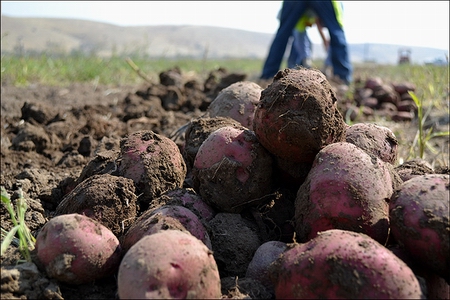
Experiments have begun in Oregon aimed at using the unmanned aircraft known as drones to keep potatoes happy.
The Federal Aviation Administration recently authorized the use of drones to fly over Oregon State University potato fields in search of unhealthy plants, such as those have don't have enough water or fertilizer.
Two drones leased from Boeing Co. are outfitted with small infrared cameras that can detect unhealthy plants sooner than growers might otherwise, said Phil Hamm, director of the Oregon State extension center at Hermiston. Healthy plants reflect the light more strongly, he said.
"When plants aren't happy, they look different, but not necessarily different to our eyes," he said. "We want to recognize plants that aren't happy before there's a reduction in yield."
He was on a panel Tuesday at a meeting held by the Hermiston Chamber of Commerce, the East Oregonian reported.
The extension center is flying the drones over its own fields as well as over a private farm west of Boardman.
Guests at the meeting Tuesday inspected the two vehicles.
One, the HawkEye, is no bigger than a suitcase with a maximum flight time of 30 minutes. It is held in the air by parachute.
The other, the delta-winged Unicorn, has a wingspan of no more than 6 feet and is launched into the air by a bungee cord that acts as a slingshot.
Each vehicle is battery-powered, and weighs only a couple of pounds.
A drone today typically costs $10,000-$15,000, but the price should drop over time, said Dan Gadler, contract services engineer with Boeing Research & Technology.
Gusty winds can be a problem for flights, although every system is different, he said. Otherwise, they can fly over an entire 125-acre crop circle in about 15 minutes.







